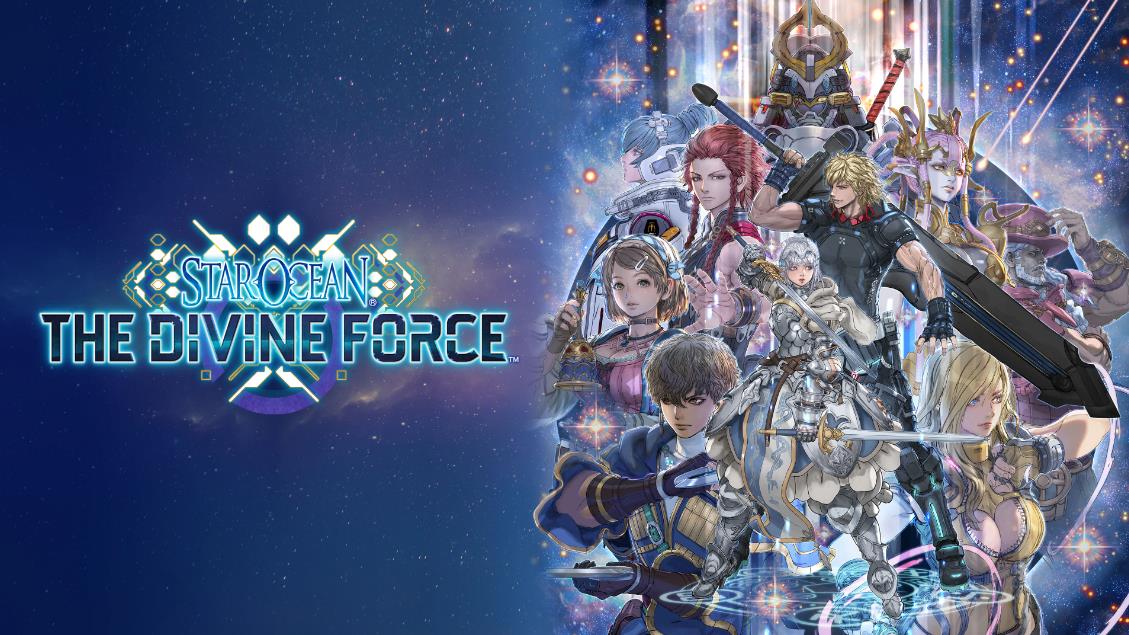
To preface this Star Ocean: The Divine Force review with some disclosure; your humble author has a love-hate relationship with the franchise. The first three games are classic RPGs, but when it came time to move onto the seventh gen on HD consoles, Star Ocean struggled to maintain relevancy.
Star Ocean was always a mid-tier RPG series and when Square Enix acquired tri-Ace, there was an effort to make it bigger than it was. Star Ocean: The Last Hope alienated everyone with its insufferable cast and sloppy storytelling. It looked amazing, but God help anyone who tried to endure the voice acting and melodramatic schmaltz.
Integrity and Faithlessness further damaged Star Ocean‘s image with its corner cutting, shockingly small world, and worse story. Most fans can’t agree which one is worse, but maybe the latest entry can make them forget that last decade and remember what it is about these games they love? Is this 25th anniversary a eulogy or a victory? Find out in our Star Ocean: The Divine Force review!
This is a review coupled with a supplemental video review. You can watch the video review or read the full review of the below:
Star Ocean: The Divine Force
Developer: tri-Ace, Square Enix
Publisher: Square Enix
Platforms: Windows PC, Xbox One, Xbox Series X|S, PlayStation 4, PlayStation 5 (reviewed)
Release Date: October 27, 2022
Players: 1
Price: $59.99 USD
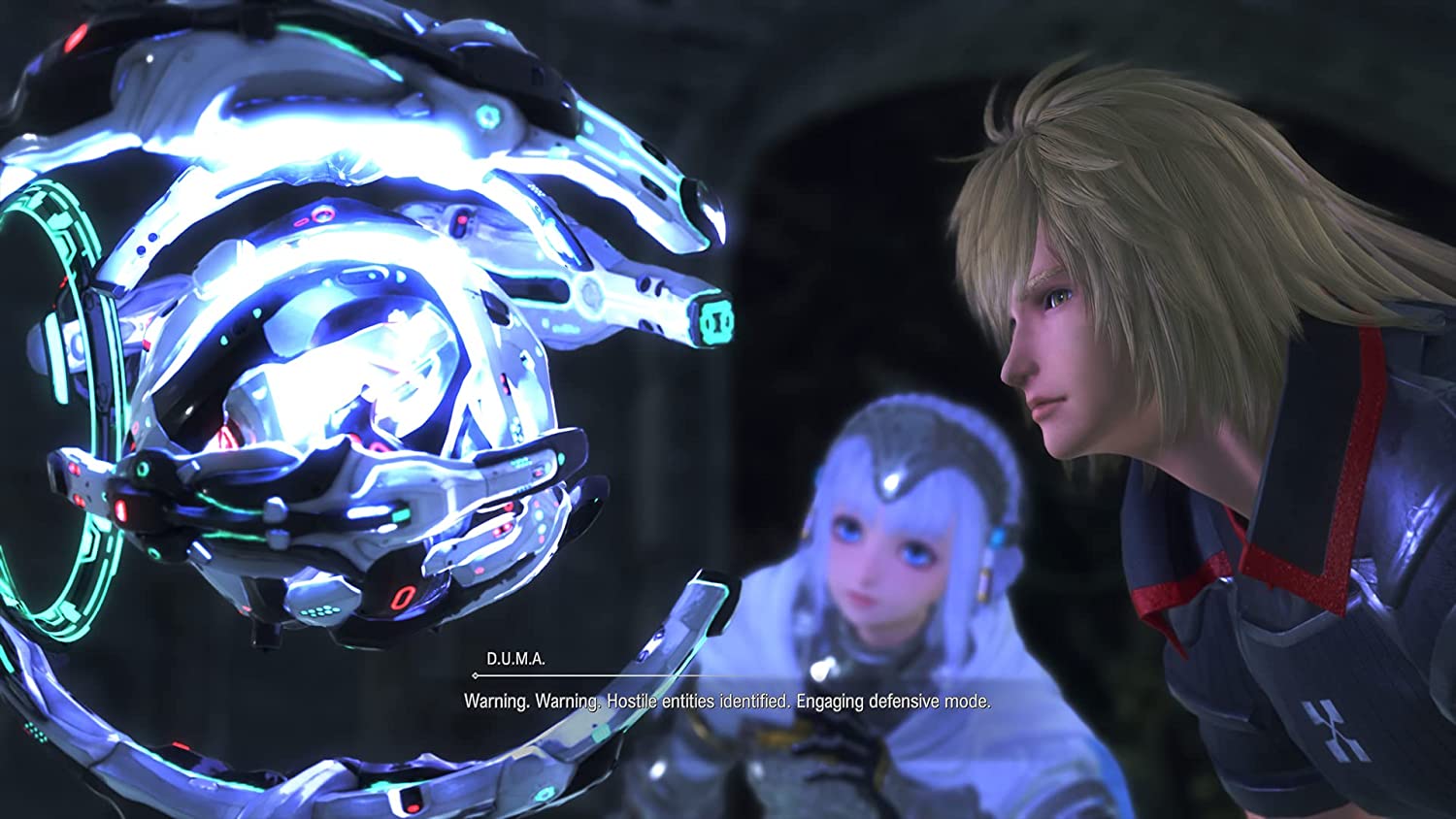
During the Star Ocean: The Divine Force preview, there was a lot of potential that suggested that the final game could deliver the first good HD Star Ocean game.
Thankfully, tri-Ace has succeeded and most importantly; they have developed one of the better action RPGs available. The Divine Force is a sight to behold. It has intensely bright and dazzling visuals that really grab the viewer by their throat.
Environments vast and sweeping; the kind of settings that feel comforting to longingly stare at. It can feel as if you were a prisoner behind concrete walls your whole life and exploring the rolling hills of Aster IV are your first experience in witnessing nature’s splendor.
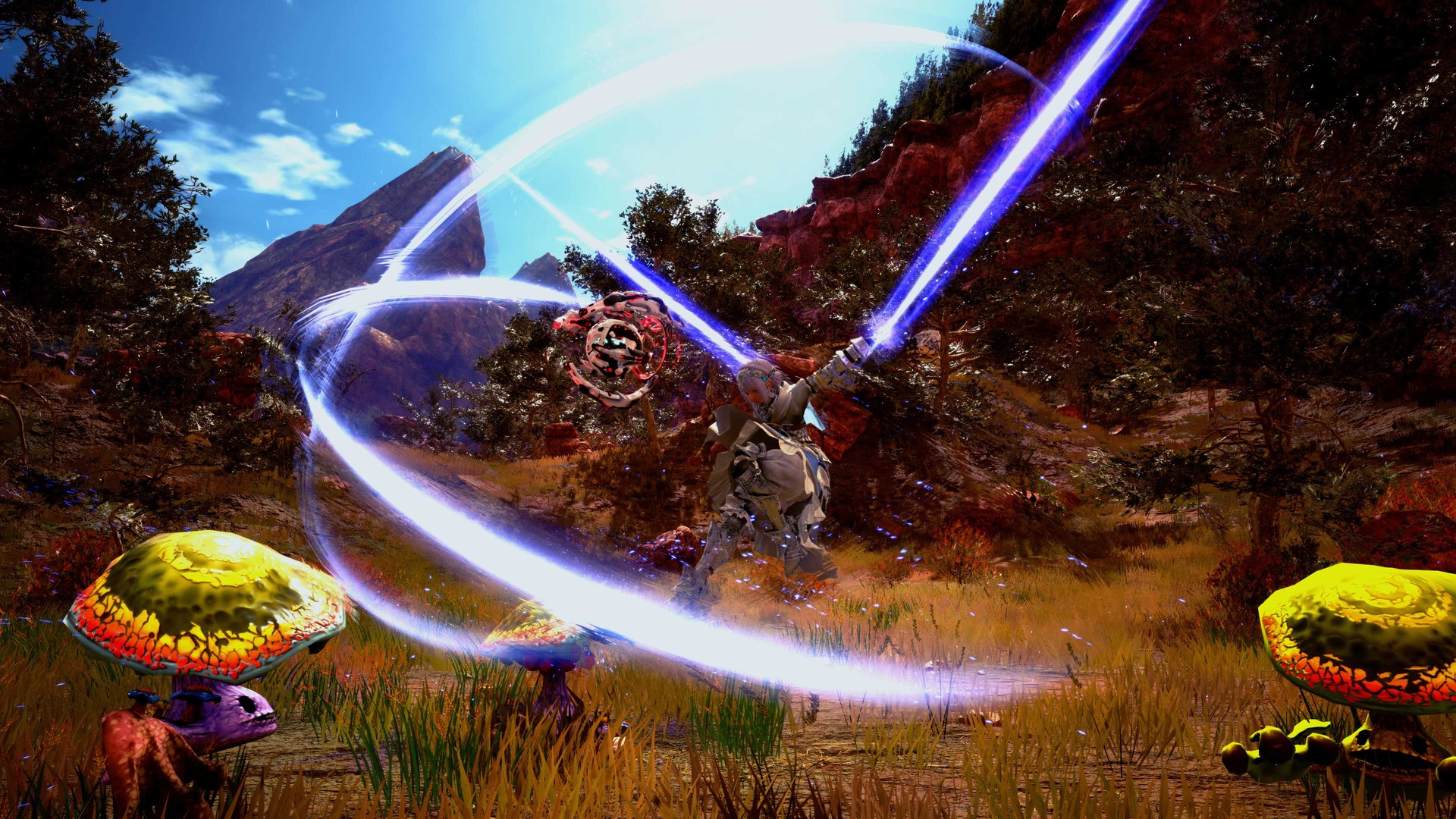
Character models don’t disappoint. Everyone is tightly detailed and overdesigned in a way that makes them stand out. The various materials and textures mixing with distinct silhouettes make each character feel very defined. Regretfully, the only visuals where tri-Ace cut corners on were facial expressions and scene direction.
Characters fail to emote much in cutscenes and the voice acting is leaned on to make up for the lack of expressions. In many dialogue scenes, body language animations are very basic but are also absurdly over-the-top. Characters do silly anime-style poses and gestures and while it does work for the comedic scenes, in dramatic sequences it comes off as low budget.
Most Star Ocean games are not loved for their stories and Star Ocean: The Divine Force is not one to mix things up. The opening starts with a strong premise but quickly runs out of steam when there is almost no story to speak of – just busy work.
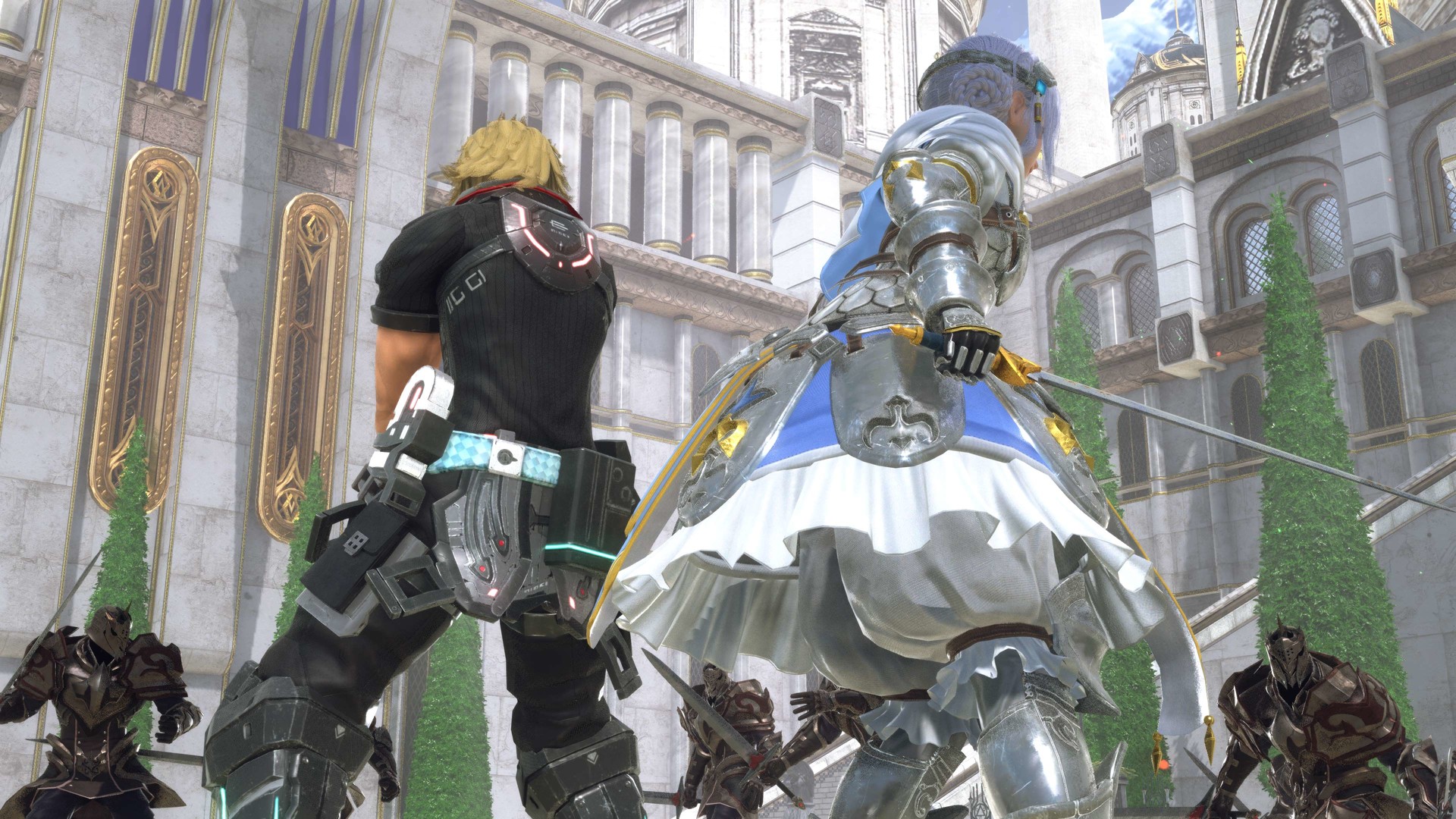
For a long while, the two protagonists, Raymond and Laeticia, are passive to other events revolving around other characters. There is a lot of running around between areas and the scenario is not eventful for several hours. Imagine having to run back to Colony 9 from the Gaur Plains after getting there – Star Ocean: The Divine Force does this a lot until it unlocks fast-travel.
When the narrative picks-up, the sense of adventure finally takes hold. Aster IV is a big place and the drawn out opening is in service of establishing the setting for when major events happen. This especially comes into play with the two playable protagonists.
Choosing between Raymond or Laeticia will not make a dramatic change to the story, but it does greatly affect context. Certain events won’t be experienced to the player depending on who is chosen at the start.
Gameplay is unaffected by this choice but having knowledge that is set-up in a way that only either of the protagonists would understand does affect the way you experience the story.
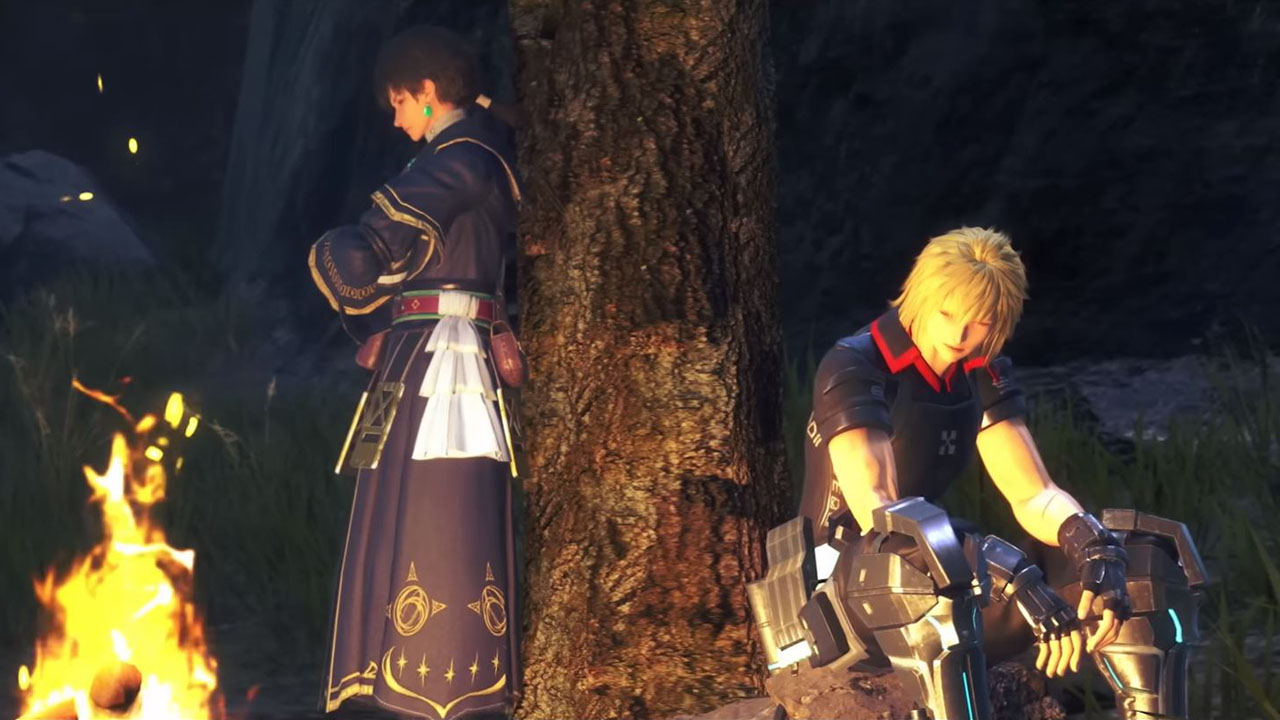
The narrative may be basic, but it does make up for it with a cast of fleshed characters you’ll care about. Everyone gets their time in the spotlight and gets motivations set up for pay-offs later as the story unfolds. Star Ocean: The Divine Force gets the basics right and while it doesn’t innovate, it satisfies the needs of the player.
Some aspects in the plot are not given the appropriate lip-service they need. For example, the language barrier is never explained and the UP3 is almost never brought up when it should. These are details that long-time fans might have an answer for, but Star Ocean: The Divine Force glosses over these issues.
Everything leads up to a climax on a galactic scale. The stakes are high and the fast paced gameplay compliments the breakneck speed of the events compounding upon each other. The battle system goes full real-time action and attack-mapping like in God Hand.
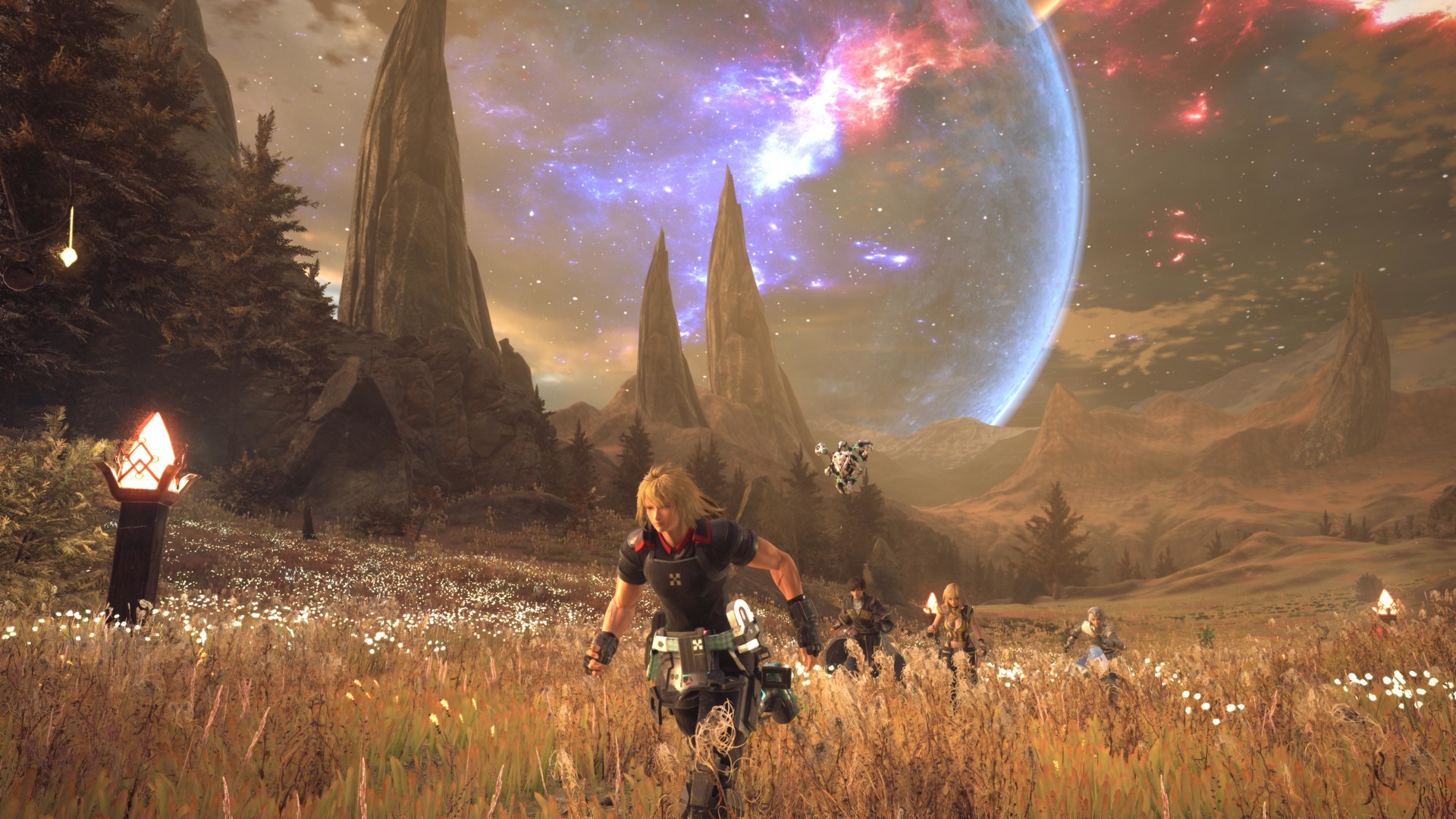
The kinesthetic feel of fighting in Star Ocean: The Divine Force is very snappy and fluid. The incredible particle effects and sparks that fill the screen make the attacks look and sound vicious. Players will have to manage their action points when attacking since each attack comes at a cost. Blindly mashing will quickly leave heroes wide open and will have to wait a moment to recharge.
There is hope though; performing blindsides on foes or executing a perfect-dodge can increase the maximum allotted action points. Compounded with the high speed dashing that’s powered by a trusty D.U.M.A.; battles unfold with the outrageous spectacle of a Devil May Cry game.
There are several party members. Between each of them is a unique combat style and a role to serve during battle. For example, Nina is primarily a healer and support character who has very few direct attacks. Midas is a powerful mage who is does big damage at the cost of speed.
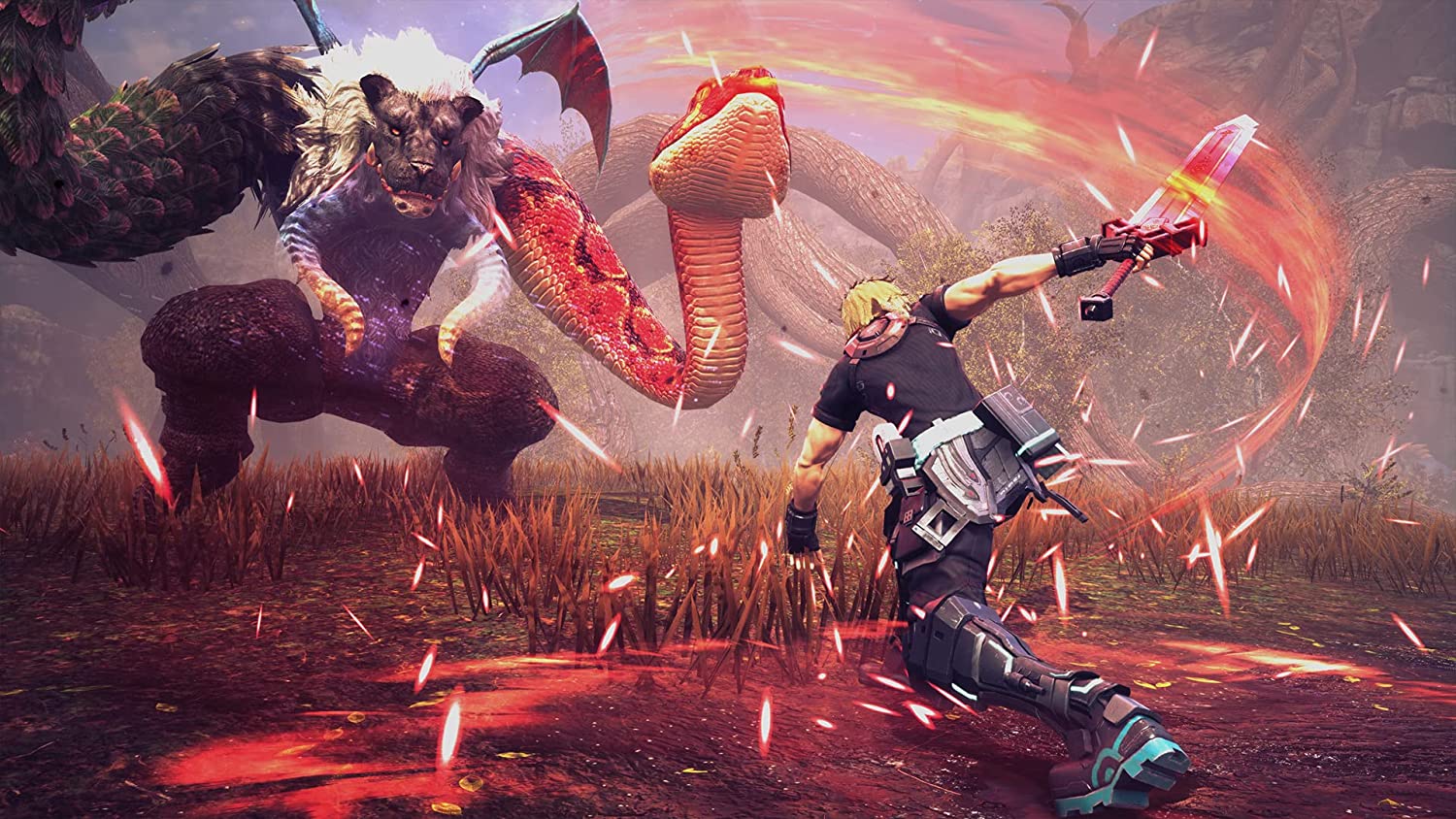
The combat system is flexible and the party AI is competent enough for players to trust while switching around to experiment. There is almost no wrong way to play- every party member is useful and the range of character customization via the skill-trees allows for unique builds and specialization.
The only drawbacks of the combat in Star Ocean: The Divine Force is the camera and targeting can get confusing at times. It isn’t a deal-breaker, but using D.U.M.A. to charge past an enemy that you thought was locked does happen a bit more often than you’d like.
Exploration is utterly necessary in The Divine Force since D.U.M.A. relies on crystals for upgrades, which can only be found on the field. Playability feels tight while platforming and the D.U.M.A. can allow players to explore in a 360 degree space- almost completely unimpeded. Star Ocean: The Divine Force can feel like grabbing collectibles in Banjo-Kazooie while running around towns and floating islands.
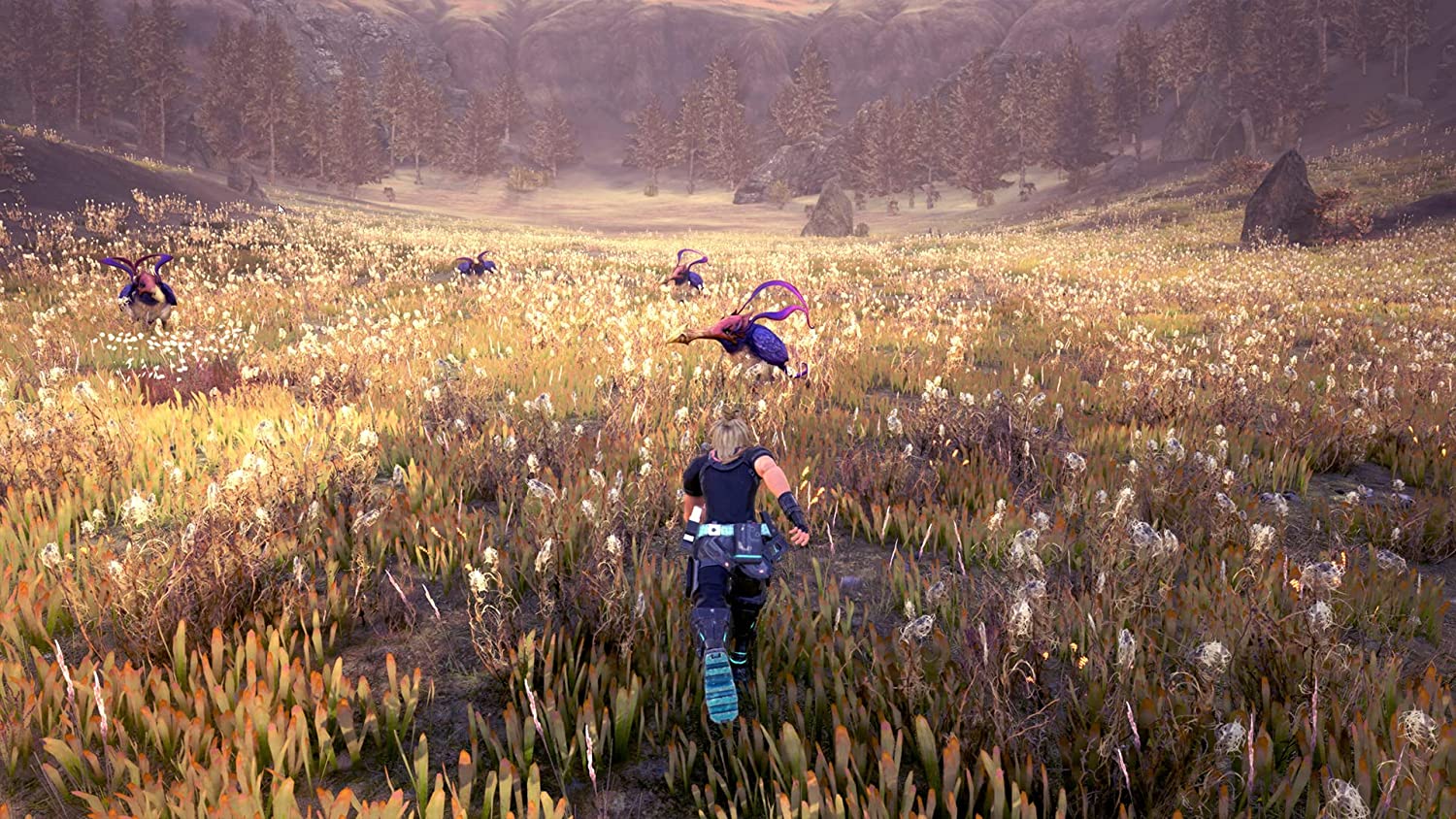
Motoi Sakuraba’s music for the Star Ocean series can be hit or miss. His signature tends to be very loud and overly chaotic scores that can be grating and while The Divine Force definitely has some of that, his more soothing ambient tracks while exploring are solid.
It is too bad that Valkyrie Elysium is the lesser game compared to Star Ocean: The Divine Force, because that game has the better soundtrack. At worst, Sakuraba’s music in this game can be used in inappropriate places and don’t always match with the tone of the scene.
Star Ocean: The Divine Force is not a perfect action-RPG, but it does have a lot going for it that make it extremely enjoyable. It has top notch production values for the most part and it more than makes up for the utterly disappointing Integrity and Faithlessness. The the balance of awesome visuals, exciting combat and addictive exploration mark this entry as a series high point.
Star Ocean: The Divine Force was reviewed on PlayStation 5 using a copy provided by Square Enix. You can find additional information about Niche Gamer’s review/ethics policy here. Star Ocean: The Divine Force is now available for Windows PC (via Steam), Xbox One, Xbox Series X|S, PlayStation 4 and PlayStation 5.